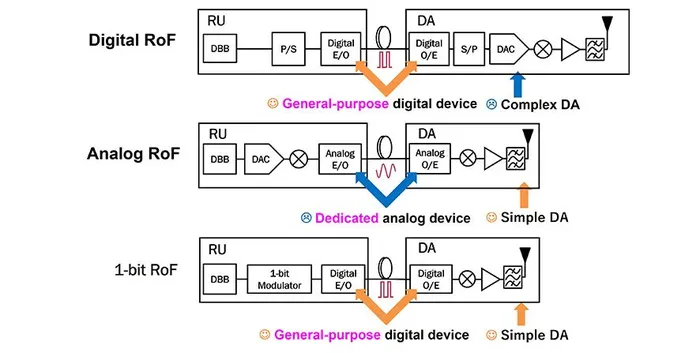The telecom industry is buzzing with excitement as NEC Corporation unveils its groundbreaking millimeter-wave (mmWave) antenna technology. This innovative development promises to revolutionize the deployment of high-frequency communication networks, particularly for Beyond 5G and 6G. Here’s a closer look at what this new technology entails and its potential impact on the market.
A New Era of mmWave Communication
NEC has introduced a radio-over-fiber (RoF) system that leverages a 1-bit fiber transmission method. This technology allows high-frequency analogue signals to be converted into 1-bit pulse signals and transmitted over fiber optics. Once transmitted, these signals can be accurately reproduced using a filter. The primary advantage of this method is its ability to use an inexpensive electrical-to-optical converter designed for general-purpose digital communications.
The result? A compact, cost-effective distributed antenna unit (DA) that can be deployed at a fraction of the traditional cost. This innovation is set to make stable mmWave communication networks more accessible and affordable, paving the way for the next generation of high-speed, large-capacity communications.
Addressing Urban Connectivity Challenges
One of the most significant challenges in urban connectivity is ensuring reliable communication in complex environments such as high-rise buildings, underground malls, factories, and railways. These areas are typically laden with obstacles that can disrupt signal transmission. NEC’s new technology is designed with these environments in mind, offering a solution that reduces power consumption and lowers costs.
Given that approximately 80% of mobile communication traffic occurs indoors, mmWave is increasingly being considered a viable indoor solution. However, the high propagation loss and the need for line-of-sight between base stations and terminals have posed significant hurdles. NEC’s compact RoF system and its associated transmission method address these issues by allowing dense installation of DAs, ensuring a clear line of sight and improved quality of service (QoS).
Implications for the Telecom Industry
The deployment of mmWave technology is seen as a potential new revenue stream for telecommunications companies. Just last week, Deutsche Telekom successfully trialed 5G frequencies in the mmWave range at 26 GHz in industrial scenarios, underscoring the commercial viability of this technology.
NEC’s innovation is expected to accelerate the adoption of mmWave communication by making it feasible to install numerous low-cost DAs in high-density environments. This development is likely to enhance the overall mmWave communication infrastructure, providing a stable and efficient network that supports the high-speed and large-capacity demands of Beyond 5G and 6G applications.
Future Prospects
As the telecom industry continues to evolve, NEC’s mmWave antenna technology stands out as a pivotal advancement. By addressing key challenges in urban and indoor connectivity, this technology not only promises to enhance user experience but also offers a scalable and cost-effective solution for telecom operators. As we move towards a more connected future, innovations like these will be crucial in shaping the landscape of global communications.
In summary, NEC’s new mmWave antenna technology represents a significant leap forward for the telecom industry. With its potential to improve connectivity in challenging environments and its cost-effective implementation, it is poised to play a vital role in the rollout of next-generation communication networks. Keep an eye on this space as NEC continues to push the boundaries of what’s possible in the world of telecom.

Source: Telecoms.com










Leave a Comment
Your email address will not be published. Required fields are marked with *